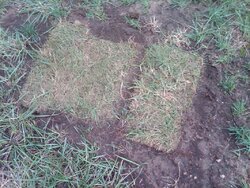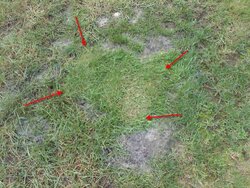Hello
Was digging out a space in back. The grass seems to always grow better in the back then where I want in the front!
Anyway, the patches of grass was so nice, I tried transplanting 2 patches into a bare spot in front. See pic below
Does anyone have good luck doing this??
Was digging out a space in back. The grass seems to always grow better in the back then where I want in the front!
Anyway, the patches of grass was so nice, I tried transplanting 2 patches into a bare spot in front. See pic below
Does anyone have good luck doing this??





